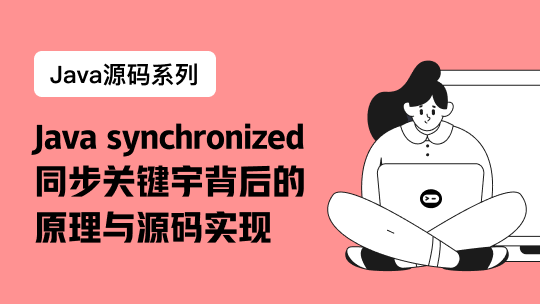[TOC]
1.NIO初识
反应器模式
使用单线程模拟多线程,提高资源利用率和程序的效率,增加系统吞吐量。下面例子比较形象的说明了什么是反应器模式:
一个老板经营一个饭店,
传统模式 - 来一个客人安排一个服务员招呼,客人很满意;(相当于一个连接一个线程)
后来客人越来越多,需要的服务员越来越多,资源条件不足以再请更多的服务员了,传统模式已经不能满足需求。老板之所以为老板自然有过人之处,老板发现,服务员在为客人服务时,当客人点菜的时候,服务员基本处于等待状态,(阻塞线程,不做事)。
于是乎就让服务员在客人点菜的时候,去为其他客人服务,当客人菜点好后再招呼服务员即可。 --反应器(reactor)模式诞生了
饭店的生意红红火火,几个服务员就足以支撑大量的客流量,老板用有限的资源赚了更多的money~~~~^_^
通道:类似于流,但是可以异步读写数据(流只能同步读写),通道是双向的,(流是单向的),通道的数据总是要先读到一个buffer 或者 从一个buffer写入,即通道与buffer进行数据交互。
通道类型:
FileChannel:从文件中读写数据。
DatagramChannel:能通过UDP读写网络中的数据。
SocketChannel:能通过TCP读写网络中的数据。
ServerSocketChannel:可以监听新进来的TCP连接,像Web服务器那样。对每一个新进来的连接都会创建一个SocketChannel。
FileChannel比较特殊,它可以与通道进行数据交互, 不能切换到非阻塞模式,套接字通道可以切换到非阻塞模式;
缓冲区 - 本质上是一块可以存储数据的内存,被封装成了buffer对象而已!
缓冲区类型:
- ByteBuffer
- MappedByteBuffer
- CharBuffer
- DoubleBuffer
- FloatBuffer
- IntBuffer
- LongBuffer
- ShortBuffer
常用方法:
- allocate() - 分配一块缓冲区
- put() - 向缓冲区写数据
- get() - 向缓冲区读数据
- filp() - 将缓冲区从写模式切换到读模式
- clear() - 从读模式切换到写模式,不会清空数据,但后续写数据会覆盖原来的数据,即使有部分数据没有读,也会被遗忘;
- compact() - 从读数据切换到写模式,数据不会被清空,会将所有未读的数据copy到缓冲区头部,后续写数据不会覆盖,而是在这些数据之后写数据
- mark() - 对position做出标记,配合reset使用
- reset() - 将position置为标记值
缓冲区的一些属性:
capacity - 缓冲区大小,无论是读模式还是写模式,此属性值不会变;
position - 写数据时,position表示当前写的位置,每写一个数据,会向下移动一个数据单元,初始为0;最大为capacity - 1,切换到读模式时,position会被置为0,表示当前读的位置
limit - 写模式下,limit 相当于capacity 表示最多可以写多少数据,切换到读模式时,limit 等于原先的position,表示最多可以读多少数据。
非直接缓冲区:通过allocate() 方法 分配缓冲区,将缓冲区建立在JVM内存中
直接缓冲区:通过allocateDirect() 方法直接缓冲区 将缓冲区建立在物理内存中
2. NIO实战
2.1 关于缓冲区各个属性的测试
String str = "abcde";
//1. 分配一个指定大小的缓冲区
ByteBuffer buf = ByteBuffer.allocate(1024);
System.out.println("--------------allocate()----------------");
System.out.println(buf.position());//0
System.out.println(buf.limit());//1024
System.out.println(buf.capacity());//1024
//2. 利用put存入数据到缓冲区中去
buf.put(str.getBytes());
System.out.println("----------------put()-------------------");
System.out.println(buf.position());//5
System.out.println(buf.limit());//1024
System.out.println(buf.capacity());//1024
//3. 切换到读取模式
buf.flip();
System.out.println("----------------flip()------------------");
System.out.println(buf.position());//0
System.out.println(buf.limit());//5
System.out.println(buf.capacity());//1024
//4. 利用get() 读取缓冲区中的数据
byte[] dst = new byte[buf.limit()];
buf.get(dst);
System.out.println(new String(dst,0,dst.length));
System.out.println("----------------get()------------------");
System.out.println(buf.position());//5
System.out.println(buf.limit());//5
System.out.println(buf.capacity());//1024
//5.可重复读
buf.rewind();
System.out.println("----------------rewind()------------------");
System.out.println(buf.position());//0
System.out.println(buf.limit());//5
System.out.println(buf.capacity());//1024
//6.clear(): 清空缓冲区, 但是缓冲区的数据依然存在, 但是处于被遗忘的状态
buf.clear();
System.out.println("----------------clear()-------------------");
System.out.println(buf.position());//0
System.out.println(buf.limit());//1024
System.out.println(buf.capacity());//1024
byte[] newByte = new byte[buf.limit()];
buf.get(newByte);
System.out.println(new String(newByte,0,newByte.length));
###2.2 关于通道的使用
2.2.1利用通道进行文件的复制(非直接缓冲区)
FileInputStream fis = null;
FileOutputStream fos = null;
FileChannel inChannel = null;
FileChannel outChannel = null;
try {
fis = new FileInputStream("1.jpg");
fos = new FileOutputStream("2.jpg");
// ①获取通道
inChannel = fis.getChannel();
outChannel = fos.getChannel();
// ②将通道中的数据存入缓冲区
ByteBuffer byteBuffer = ByteBuffer.allocate(1024);
// 将通道中的数据存入缓冲区
while (inChannel.read(byteBuffer) != -1) {
byteBuffer.flip(); // 切换读取数据的模式
outChannel.write(byteBuffer);
byteBuffer.clear();
}
} catch (IOException e) {
e.printStackTrace();
} finally {
if (inChannel != null) {
try {
inChannel.close();
} catch (IOException e) {
e.printStackTrace();
}
}
if (outChannel != null) {
try {
outChannel.close();
} catch (IOException e) {
e.printStackTrace();
}
}
if (fis != null) {
try {
fis.close();
} catch (IOException e) {
e.printStackTrace();
}
}
if (fos != null) {
try {
fos.close();
} catch (IOException e) {
e.printStackTrace();
}
}
}
2.2.2 通道之间的传输
CREATE_NEW:如果文件不存在就创建,存在就报错
CREATE:如果文件不存在就创建,存在创建(覆盖)
FileChannel inChannel = null;
FileChannel outChannel = null;
try {
inChannel = FileChannel.open(Paths.get("hello.txt"), StandardOpenOption.READ);
outChannel = FileChannel.open(Paths.get("hello2.txt"), StandardOpenOption.READ,StandardOpenOption.WRITE,StandardOpenOption.CREATE_NEW);
inChannel.transferTo(0, inChannel.size(), outChannel);
} catch (Exception e) {
e.printStackTrace();
} finally {
if(inChannel != null){
try {
inChannel.close();
} catch (IOException e) {
e.printStackTrace();
}
}
if(outChannel != null){
try {
outChannel.close();
} catch (IOException e) {
e.printStackTrace();
}
}
}
####2.2.3 内存文件的复制(直接缓冲区)
FileChannel inChannel = null;
FileChannel outChannel = null;
try {
inChannel = FileChannel.open(Paths.get("1.jpg"), StandardOpenOption.READ);
outChannel = FileChannel.open(Paths.get("x.jpg"), StandardOpenOption.READ,StandardOpenOption.WRITE,StandardOpenOption.CREATE_NEW);
MappedByteBuffer inMappedBuffer = inChannel.map(MapMode.READ_ONLY, 0, inChannel.size());
MappedByteBuffer outMappedBuffer = outChannel.map(MapMode.READ_WRITE, 0, inChannel.size());
System.out.println(inMappedBuffer.limit());
byte[] b = new byte[inMappedBuffer.limit()];;
inMappedBuffer.get(b);
outMappedBuffer.put(b);
} catch (Exception e) {
e.printStackTrace();
} finally {
if(inChannel != null){
try {
inChannel.close();
} catch (IOException e) {
e.printStackTrace();
}
}
if(outChannel != null){
try {
outChannel.close();
} catch (IOException e) {
e.printStackTrace();
}
}
}
2.3 重点 NIO-非阻塞IO
个人认为 NIO 最难的两点 一个是对于选择器和选择键的理解 其次是对于网络通信模型的理解
本章内容以防过长 只讲解 NIO 的使用方法 上述两点参看下回分解 
2.3.1 阻塞IO示例
//客户端
@Test
public void client() throws IOException{
SocketChannel sChannel = SocketChannel.open(new InetSocketAddress("127.0.0.1", 9898));
FileChannel inChannel = FileChannel.open(Paths.get("1.jpg"), StandardOpenOption.READ);
ByteBuffer buf = ByteBuffer.allocate(1024);
while(inChannel.read(buf) != -1){
buf.flip();
sChannel.write(buf);
buf.clear();
}
sChannel.shutdownOutput();
//接收服务端的反馈
int len = 0;
while((len = sChannel.read(buf)) != -1){
buf.flip();
System.out.println(new String(buf.array(), 0, len));
buf.clear();
}
inChannel.close();
sChannel.close();
}
//服务端
@Test
public void server() throws IOException{
ServerSocketChannel ssChannel = ServerSocketChannel.open();
FileChannel outChannel = FileChannel.open(Paths.get("2.jpg"), StandardOpenOption.WRITE, StandardOpenOption.CREATE);
ssChannel.bind(new InetSocketAddress(9898));
SocketChannel sChannel = ssChannel.accept();
ByteBuffer buf = ByteBuffer.allocate(1024);
while(sChannel.read(buf) != -1){
buf.flip();
outChannel.write(buf);
buf.clear();
}
//发送反馈给客户端
buf.put("服务端接收数据成功".getBytes());
buf.flip();
sChannel.write(buf);
sChannel.close();
outChannel.close();
ssChannel.close();
}
####2.3.2 非阻塞IO示例-TCP
//客户端
@Test
public void client() throws IOException{
//1. 获取通道
SocketChannel sChannel = SocketChannel.open(new InetSocketAddress("127.0.0.1", 9898));
//2. 切换非阻塞模式
sChannel.configureBlocking(false);
//3. 分配指定大小的缓冲区
ByteBuffer buf = ByteBuffer.allocate(1024);
//4. 发送数据给服务端
Scanner scan = new Scanner(System.in);
while(scan.hasNext()){
String str = scan.next();
buf.put((new Date().toString() + "\n" + str).getBytes());
buf.flip();
sChannel.write(buf);
buf.clear();
}
//5. 关闭通道
sChannel.close();
}
//服务端
@Test
public void server() throws IOException{
//1. 获取通道
ServerSocketChannel ssChannel = ServerSocketChannel.open();
//2. 切换非阻塞模式
ssChannel.configureBlocking(false);
//3. 绑定连接
ssChannel.bind(new InetSocketAddress(9898));
//4. 获取选择器
Selector selector = Selector.open();
//5. 将通道注册到选择器上, 并且指定“监听接收事件”
ssChannel.register(selector, SelectionKey.OP_ACCEPT);
//6. 轮询式的获取选择器上已经“准备就绪”的事件
while(selector.select() > 0){
//7. 获取当前选择器中所有注册的“选择键(已就绪的监听事件)”
Iterator<SelectionKey> it = selector.selectedKeys().iterator();
while(it.hasNext()){
//8. 获取准备“就绪”的是事件
SelectionKey sk = it.next();
//9. 判断具体是什么事件准备就绪
if(sk.isAcceptable()){
//10. 若“接收就绪”,获取客户端连接
SocketChannel sChannel = ssChannel.accept();
//11. 切换非阻塞模式
sChannel.configureBlocking(false);
//12. 将该通道注册到选择器上
sChannel.register(selector, SelectionKey.OP_READ);
}else if(sk.isReadable()){
//13. 获取当前选择器上“读就绪”状态的通道
SocketChannel sChannel = (SocketChannel) sk.channel();
//14. 读取数据
ByteBuffer buf = ByteBuffer.allocate(1024);
int len = 0;
while((len = sChannel.read(buf)) > 0 ){
buf.flip();
System.out.println(new String(buf.array(), 0, len));
buf.clear();
}
}
//15. 取消选择键 SelectionKey
it.remove();
}
}
}
####2.3.3 非阻塞IO示例-UDP
@Test
public void send() throws IOException{
DatagramChannel dc = DatagramChannel.open();
dc.configureBlocking(false);
ByteBuffer buf = ByteBuffer.allocate(1024);
Scanner scan = new Scanner(System.in);
while(scan.hasNext()){
String str = scan.next();
buf.put((new Date().toString() + ":\n" + str).getBytes());
buf.flip();
dc.send(buf, new InetSocketAddress("127.0.0.1", 9898));
buf.clear();
}
dc.close();
}
@Test
public void receive() throws IOException{
DatagramChannel dc = DatagramChannel.open();
dc.configureBlocking(false);
dc.bind(new InetSocketAddress(9898));
Selector selector = Selector.open();
dc.register(selector, SelectionKey.OP_READ);
while(selector.select() > 0){
Iterator<SelectionKey> it = selector.selectedKeys().iterator();
while(it.hasNext()){
SelectionKey sk = it.next();
if(sk.isReadable()){
ByteBuffer buf = ByteBuffer.allocate(1024);
dc.receive(buf);
buf.flip();
System.out.println(new String(buf.array(), 0, buf.limit()));
buf.clear();
}
}
it.remove();
}
}








